I’m a few weekends into a new kirtle, thanks to Lorenzo’s amazing generosity of time and breathtakingly gorgeous lightweight wool fabric. Seriously, this stuff practically glows, it’s such a saturated color. I’d describe it as a purpley ultramarine, or maybe indigo. Either way, it’s incredibly vibrant. Wow.
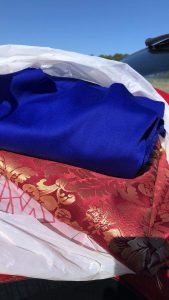
This is the first time I’ve ever sewn garb with expert instruction! So, as you read this, imagine that whenever I describe “myself” as doing something, it’s with significant guidance and feedback from Lorenzo. It’s been an interesting mix of “Oh wow, I was doing that wrong!” and “Oh wow, I was overthinking this!” and “Oh good, now I have confirmation that what I guessed was a good idea is a good idea.” This also is my first lined piece of garb, ever!
As an aside, for the purpose of this blog and clarity, from now on I’m going to use these terms:
- First layer: Chemise
- Second layer: Kirtle
- Top layer and beyond: Gown
So this is a kirtle, a tightly fitted mid 15th century kirtle with a waist seam and front lacing, with lacing rings instead of eyelets. It will have short sleeves and a full A-line skirt without pleats (except for possibly one in the back; pending research). My previous research suggested that a very common type of bodice in the mid 1400s was front laced and used lacing rings, so I went with that. The neck is rounded, not quite as low-cut and boaty as some of the early 1400s versions, but not yet square. I’m using Jean Fouquet’s handy 1452 depiction of Agnès Sorel’s exposed bosom as basis to decide to include a strip of facing inside. Blue was a very common color at that time, so this is about as boring and standard as you can get for that time period. PERFECT. This style is the next step in the evolution of the cotehardie. It’s just a bit more complex, but still gives the same overall effect of a tight, streamlined torso and loose skirt. It was very often worn layered with other things (And that’s where the variety might come into play); but plenty of examples of wearing it by itself over a long-sleeved chemise, generally in warmer weather. It’s not underwear, it wouldn’t be scandalous to wear on its own, but it’s not particularly formal. If worn under something else, it’s likely that bottom part of the skirt will show as the top layers of the gown were very frequently tied or tucked up. Am I supposed to give references, here? I’ll retroactively come back and add them once my database is done. For now, take my word for it. Or not. Haha. Trust me. I’ve seen things. (I could be wrong)
Construction began with the body block that Lorenzo made for me back in December. We converted that into a bodice pattern. Once that pattern was settled, I got to cut the very pretty wool fabric, and also into some pale blue linen for the lining.
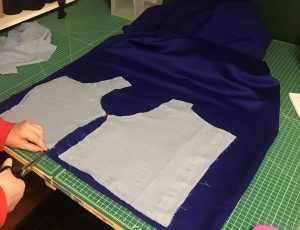
Lickity-split, the lining was sewn, turned out, and ironed, shoulders sewn up, and it was time for some lacing rings! Look how they sparkle against the rich blue!
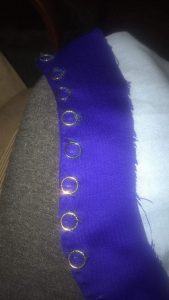
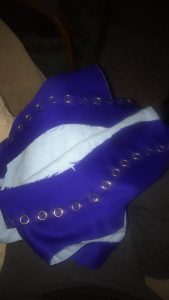
Then, I sewed the facing down and ironed it flat.
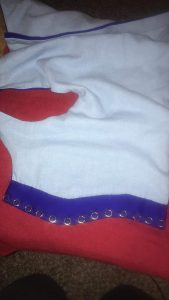
AND IT WAS ALL WRONG. Darn spiral lacing. And that’s about when I realized there was a bit of a fit issue with the bust. Not terrible, but worth fixing – basically, I want to avoid the flattening effect a bit more than I have, here.
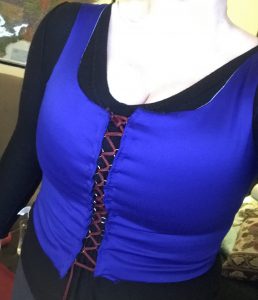
A few more rings sewn later, and a different way of lacing (more tension on the bottom, less on top) yielded a better fit, this time worn over my in-progress supportive chemise.
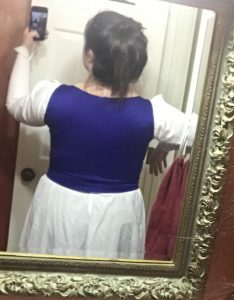
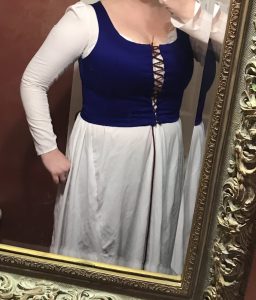
I think for next time I will make sure to cut the armholes into the back quite a bit more than they are here. But, this is a great fit, and I’ve moved onto the sleeves.
To be continued!
